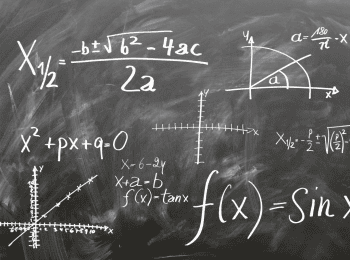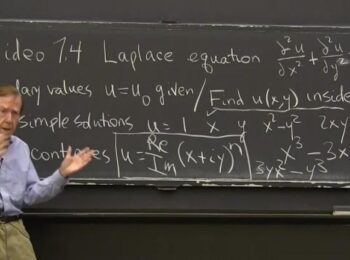Finding the distance from one point to another is critical for a variety of reasons. On a straight surface, this is incredibly easy to achieve. But what do you do with a curve? Well, that’s what mathematicians tried to figure out for many centuries. Fortunately, this is now a solved problem, and it has allowed us to advance our knowledge of calculus significantly.
From biblical times, the leading figures in science have wrestled with the issue. Some, like Archimedes, even came up with reliable solutions that could give good estimations, albeit not equal to the correct answer. Building upon his and others new theorems, later mathematicians have been able to make improvements and additions.
But it wasn’t until relatively recently, at least in terms of mathematics, that we figured out precisely how to calculate the length. Even as late as Newton, it still wasn’t completely fleshed out. Fortunately for you, we now have a simple and easy to understand formula to relate to and use to calculate distances of any length.
In this guide, we’ll look at what the formula is. We’ll also discuss why it’s important to know and how Fermat and other mathematicians throughout history derived it. By obtaining it, you’ll be able to understand the equation more fully and therefore, should be able to apply it with a higher degree of success and comprehension.
Why Do We Care About the Arclength?
If you want to do any advanced calculus, it’s critical that you can identify the length of a curve. In many cases, curves are infinitely long, and therefore your goal might be to find the distance between two values of x or y such that you can solve or implement the number into further equations.
In a practical sense, this formula could be for engineering. Imagine creating a bridge with a given height and span. You’d need to know precisely how long the metal should be before it’s going to bend into the specific curvature that you need to support the span and keep it upright.
Without this formula, it would be incredibly hard to figure this distance out. By using it, companies can save time and wasted materials, allowing them to calculate to within inches the length of piping or metal that they need. Like much of mathematics, there are often efficient uses that you may not think of if you don’t look into it.
Although most of us will never do this type of engineering, this formula was groundbreaking at the time of discovery. Without it, we would be unable to advance and do further calculations. It solved a roadblock that has allowed us to discover more advanced functions and theorems that the leading scientists are still using today.
Students often ask what the point of the formula is. You could ask the same about the Pythagorean theorem. But as you’ll see when we derive the arclength below, without Pythagoras is would be impossible for us to have discovered how to calculate the length of a given curve or arc.
Truthfully, what most people misunderstand about mathematics is that it’s a story. Teachers and students alike make the mistake of jumping forwards and backward and then complaining that it’s difficult and they can’t understand it. It’s necessary to step to step, in a logical order that the leading mathematicians took so that you can follow every part of the story.
For example, if you don’t understand graphing, you cannot understand calculus. Without algebra, you won’t grasp graphing and so on. Therefore, if you’re struggling with arcs, go back to graphing and keep going back until you get to a point where you’re comfortable. Then, work forward and don’t skip a step. Fix the foundations so that you have a better understanding.
What Is The Arclength Formula?
The arclength formula allows us to figure out the distance between two points on a curve that isn’t straight. We can also do the same for a circle or different shape. But the primary use of this equation is to solve for distances between irregular and complex curves. Here’s a quick history of the formula:
-
-
Early mathematicians like Archimedes had crude alternatives
-
Fermat and another mathematician simultaneously were working on the problem
-
-
Newton and others made improvements later
Deriving the Arclength Formula
Imagine that we have an arc on a graph, whereby the gradient is changing at a constant rate to create a smooth curve. How would we go about finding the length of the arc? This problem is what led to the derivation of the arc length formula which allows us to calculate it.
Pierre de Fermat, arguably the greatest mathematician in history, was the one who discovered and popularized this method. His work built upon that of Archimedes and other mathematicians before Fermat’s time. His idea was that by taking a tangent, you could create a formula for the line and then use small segments to estimate the length of the curve.
If we take two points, x0 and x1, on the curve, we can create a right-angled triangle to connect them. The longest side of the triangle will not perfectly follow the curve, but it’s close enough to get a reasonably accurate estimation for the length of the curve between the two points. Where S1 is the distance on the curve and x and y are points on the curve respectively.
S1 = √ (x1 − x0)2 + (y1 − y0)2
In this example, we use the mathematical symbol Δ (delta) which means the difference between two values, in this case, x0 and x1 and y0 and y1.
S1 = √ (Δx1)^2 + (Δy1)^2
Imagine that instead of just using one large triangle, we used a lot of small ones. The result would be that we could get the longest side on each triangle closer to the correct path of the arc. Therefore, we will be able to get a much closer estimation of the true length of the curve on the graph.
S2 = √(Δx2)^2 + (Δy2)^2
S3 = √(Δx3)^2 + (Δy3)^2
…
…
Sn = √(Δxn)^2 + (Δyn)^2
Rather than having a bunch of equations, we can simplify them all into a single formula. By doing so, we can look at the curve in its entirety by segmenting it into an infinite number of infinitely small segments.

S ≈ Σ √(Δxi)^2 + (Δyi)^2
i=1
This formula above looks complicated, but it’s incredibly simple. All it’s saying is that the length S is roughly equal to the sum of all of the longest sides of the triangles, where we use n number of triangles. The problem is that it will take us years to add up all of those numbers! Hmm, there has to be a better way.
Fortunately, there is, and this is what Fermat discovered and why he’s remembered as such a talented mathematician. This calculation seems simple now because we can find it online, but this discovery was groundbreaking and change the direction of the universe for good. Without his genius, we wouldn’t be able to do much of the engineering we do today.
The solution is to make all of the Δxi in the formula be the same, so we can remove them from inside of the square root and create an integral.
To achieve this, we need to divide and multiply Δyi by Δxi, leaving us with:
S ≈ Σ √(Δxi)^2 + (Δxi)^2(Δyi/Δxi)^2
i=1
Next, we must factor out the (Δxi)^2:
S ≈ Σ √(Δxi)^2 + (1 + (Δyi/Δxi)^2)
i=1
Take (Δxi)^2 out from inside of the square root:
S ≈ Σ √(1 + (Δyi/Δxi)^2) * Δxi
i=1
We now that as n approaches infinity, we get closer to an infinite number of slices over a given distance. Therefore, the segment that each cover gets smaller, approaching an infinitely small size. As a result, we can get a more accurate estimation of the length of the arc, to the point of it becoming equal rather than approximate.
S = lim Σ √(1 + (Δyi/Δxi)^2) * Δxi
N→∞ i=1
Now, we have an integral. Typically we replace Δx with dx and likewise with dy. The reason for this is to symbolize that we are approaching a zero width and therefore can assume equality.
S = lim Σ √(1 + (dy/dx)^2) * dx
N→∞ i=1
We know that dy/dx is the derivative of the function f(x) and therefore you can substitute that into the formula if you wish. However, for most people, it’s easier to remember the above the arclength formula so that you can more easily solve the equation and use it for calculations.
In a few short steps we’ve been able to derive the formula so that rather than needing to add up a bunch of slices for an approximate answer, we can calculate a precise number. The only thing you need to do is to solve the differential and integral for the curve or arc which will allow you to find the distance and also other figures like space under the curve.
It’s important to remember that the integral will also work concerning y. This fact is useful if we already know that x = f(y) and therefore can solve.






